The Unfinished Swan review
Angsty birds.
While Sony has frequently been dragged over the coals during this hardware generation - sometimes with good cause, often without - the one thing it can most definitely be praised for is its dedication to the quirkier, artier end of the gaming spectrum. Few would have thought that such a corporate Goliath would excel at shepherding these delicate projects into the limelight, but from Flower to Noby Noby Boy to Journey to Linger in Shadows, the PlayStation Network has been the only console storefront to really carve out a niche for arthouse projects.
The Unfinished Swan definitely fits into that category, first seeing the light of day at the Independent Games Festival in 2008, after which Sony took it under its wing. What made it stand out back then was how beautiful and stark it looked; it sets you in a brilliant white and apparently empty game world where your only interaction is to lob balls of paint. These splatter against the unseen geometry of the world, revealing the shapes around you.
It's an absolutely charming effect. The first stage finds you carefully picking your way through an invisible rural landscape rendered piece by piece in jet black splashes against a white canvas. It is, quite frankly, stunning - all the more so when you turn around and see the path you've splashed through the void. Benches, reeds, rocks and trees all emerge from the emptiness, delicately textured and hauntingly melancholy. You could take any screenshot from this introductory section and hang it in a gallery. It's that wonderful.
That was the conceit that attracted Sony's attention in 2008, but in the move from concept to game, more has been added. The black-on-white aesthetic is dropped before the end of the first of four chapters, as shadows and other details are filled in for you. You still have to throw paint to discern the way ahead, but with the edges picked out for you, it starts to feel more like colouring within the lines. More traditional puzzles make themselves apparent.
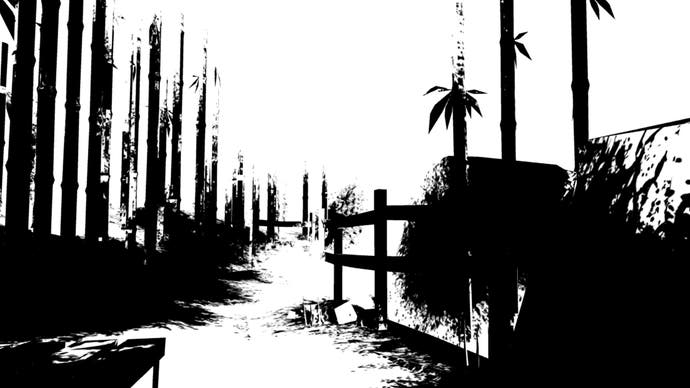
As the game continues, it plays around with different ways of throwing stuff to alter the environment. The second stage is the low point, as you navigate an eerie city with your black paint replaced with gobs of water. These are used to coax vines across the floor, up walls and over ceilings. You can then climb these vines - in a clumsy, floaty, 1990s-FPS kind of way - to progress. It's a nice idea, but one that doesn't really bear much gameplay fruit. The distracting and often glitchy climbing motion reminds you that you're just a virtual camera hovering through a fake world, and with just one gameplay mechanic to think about, the puzzles in this section are easily solved.
Things pick up as the game enters the final stretch. A journey through a dark storybook forest, keeping red-eyed spiders at bay by hitting lanterns to illuminate the path, is spooky and effective. Later puzzles require you to cross over into an alternate blueprint reality where your paint splats define the edges of platforms and boxes that you stretch into being. Back in the "real" world, you can then use them to reach areas that were previously out of bounds.
They're all interesting enough concepts on their own, but the relationship between them is awkward and apparently arbitrary. They're more like brainstormed ideas threaded together than a coherent vision, and while they mostly work in a gameplay sense, they lead to a fragmented and unsatisfying experience.
Nowhere is this more keenly felt than in the story, which follows a young boy called Monroe. Orphaned after the death of his artist mother, he is allowed to keep just one of her paintings when he's taken away to an orphanage. He chooses the one she never completed - the Unfinished Swan of the title. One night, he wakes up to discover the swan has left the painting. Following its inky orange footprints, we're led into the game.
"The conceit of a bereaved boy working his way towards emotional closure by filling an empty dreamworld is a powerful one - but every step away from the bold vision of the first level makes that tale increasingly abstract."
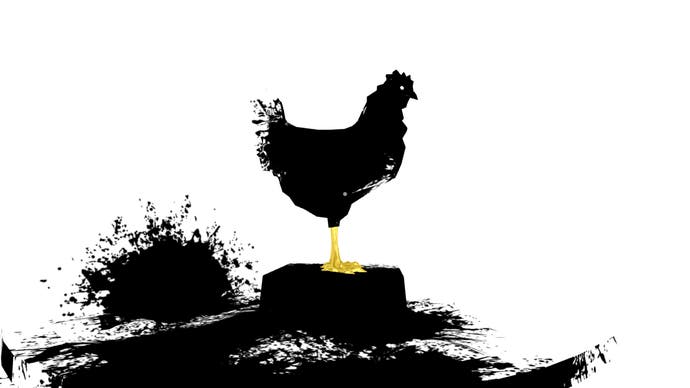
Like so much in The Unfinished Swan, it's a delightful idea but one that's never fully developed. The conceit of a bereaved boy working his way towards emotional closure by filling an empty dreamworld is a powerful one - but every step away from the bold vision of the first level makes that tale increasingly abstract.
There's allegory aplenty, of course. The story of a lonely king who tries to force the world to conform to his wishes is told through children's storybook pages that sprout from golden letters when hit with paint, but the attempts to tie all the different visual styles and gameplay mechanisms back to this central metaphor feel strained. It's easy enough to connect the dots in the broadest sense, mapping the characters from the fairytale onto Monroe's hopes and fears, but the finer details that would thicken this soup of symbolism into something digestible remain elusive.
A recurring sea monster motif comes to nothing. At one point you see yourself in a mirror as a 2D cartoon character in a pencil-sketched world: a great visual effect in search of deeper meaning. Some of the elements - such as a talking hippo - feel weird for weird's sake. Often, it feels like the story is hiding behind obfuscation and ambiguity rather than developing ideas that fit together organically. Accusations of pretension are as unjustified as they are inevitable, but the game doesn't give you much of substance with which to defend its more obscure flourishes.
The Unfinished Swan is gentle and beguiling, but also thematically patchy and insecure in its own merits, choosing to constantly introduce less interesting new gameplay systems rather than fully explore any single motif. Impeccably produced and stunningly presented, it's worth playing just for the artistry of its construction - but it's a real shame that in attempting to lead video games in a more poetic direction, it can't quite finish the job, and ends up feeling as intellectually unfinished as the Jungian symbol it asks you to chase.
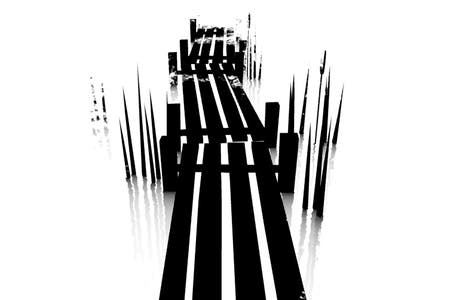

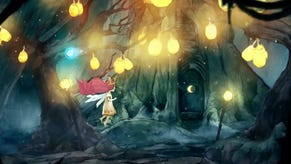
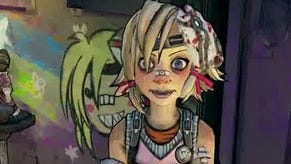


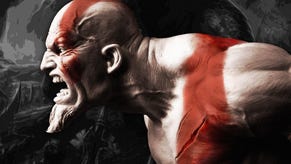

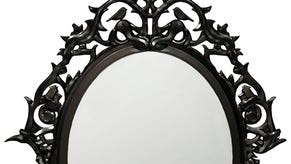

.jpg?width=291&height=164&fit=crop&quality=80&format=jpg&auto=webp)






